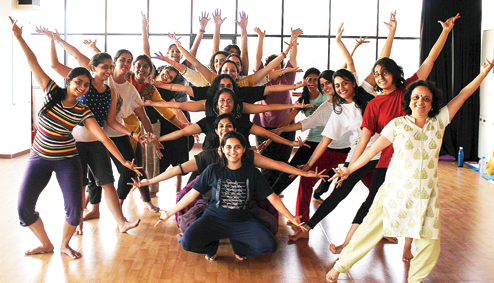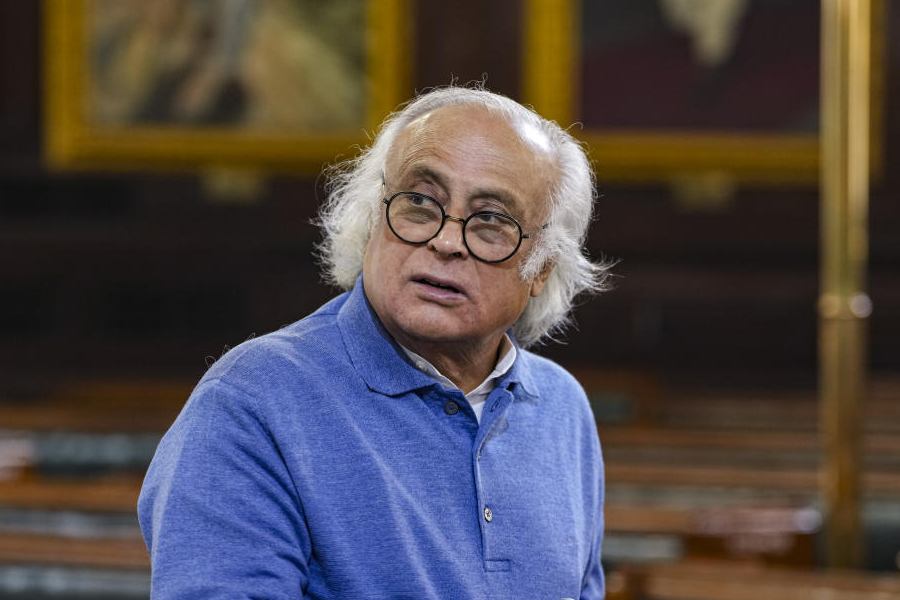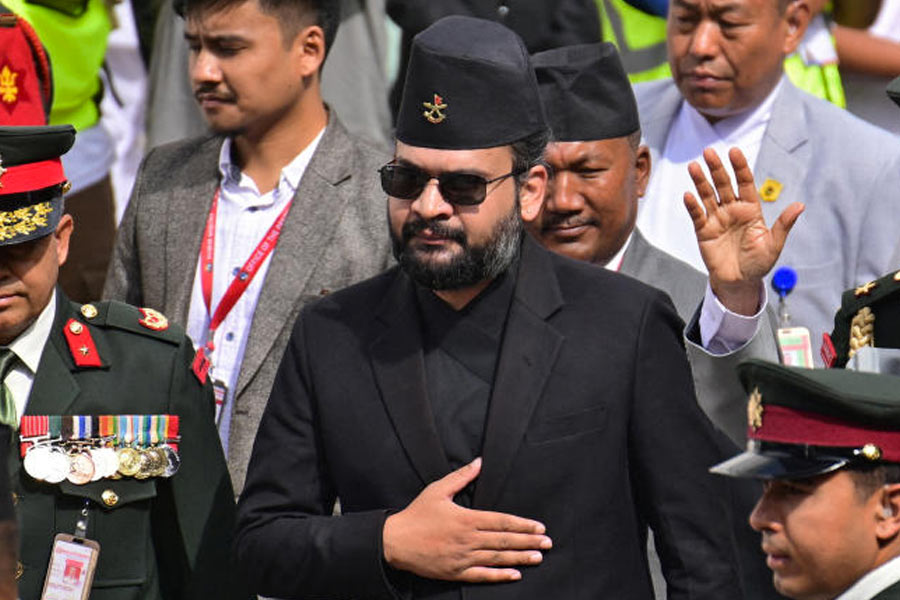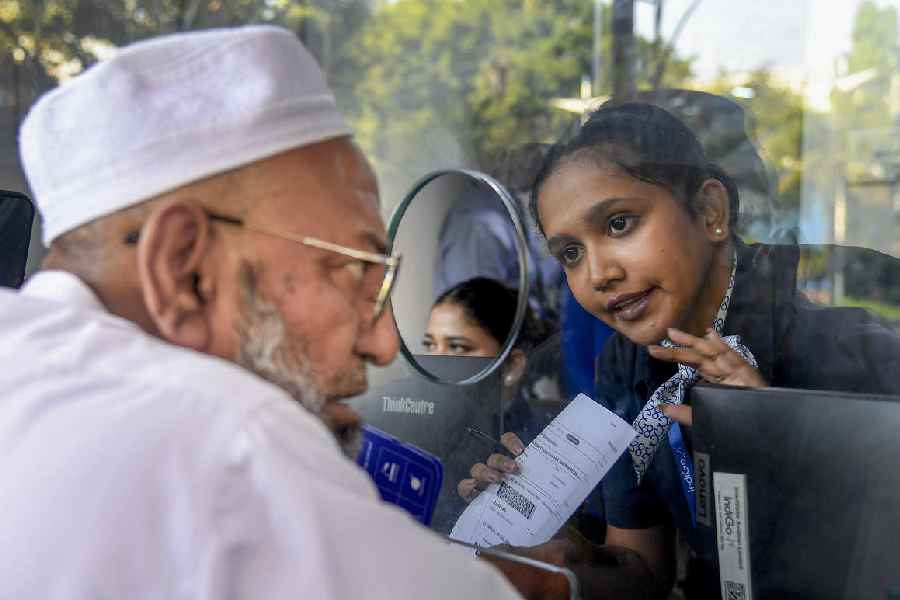
As the music filled the small room, a bunch of children started to tap their feet to it. Some matched steps with the rhythm and some could not, but they were all dancing. Only 13-year-old Laxmi (name changed) sat in one corner, quietly staring at the floor.
Five days later, Laxmi was on the floor, too. After the first few tentative moves, she danced as if there was no tomorrow. And for her, tomorrow is uncertain.
Tears streaming down her cheeks, she hugged her teacher. "I know I'm not going to live for long. And I miss my parents," Laxmi told her teacher. She and the 13 other children in the dance class are all HIV/AIDS-affected orphans living in a children's home in Hyderabad.
"Laxmi is the oldest in that group and knows the fatality of her disease," says Shashikala Reddy, a trained dance movement therapist who was associated with her school for more than a year. "The dance movement classes have helped her cope with the trauma and slowly she has begun to accept the fact and move on."
Dance movements, an alternative psychological treatment, is fast becoming a popular method of treatment of psychological and other disorders. Nilanjana Banerjee, a Calcutta-based practising psychologist, who is also a trained dancer, believes that dance movement therapy can help those suffering from depression, stress, nerve disorders such as Parkinson's - as well people with no apparent problem.
"It frees you from inhibitions and lets you discover your strengths and weaknesses. It can also help people avert a breakdown," says Banerjee, who has been using this form of therapy for her patients and holds regular workshops. In two years, the demand for such sessions has almost doubled, she says.
So what exactly is dance movement therapy? According to the American Dance Therapy Association, dance or movement therapy is "the psychotherapeutic use of movement to further the emotional, cognitive, physical and social integration of the individual".
Reddy explains that the basic difference between therapy and dance is that the former has no structure or choreography. "Movement comes naturally to us, and the focus is on free expression of body movement," she says.
Different types of dance movements are used to address different problems. An "ice cream melting act" helps reduce rigidity and loosen up - you let yourself go, falling on the ground slowly, just the way an ice cream melts. Steps that make you imagine that you are locked inside a box, trying to feel it with different parts of your body, help to physically mark space, increase assertiveness, adjustment and body flexibility and make you aware of your capabilities.
Group co-ordination activities improve relationships at the workplace and at home, and some counsellors couple them with martial art steps to enhance body flexibility.
Reddy, who currently works with children with special needs in Bangalore, points out that these therapies lessen stress considerably.
Such therapies also help in enhancing a sense of belonging. A few days ago, Reddy held a dance movement workshop with parents of children with special needs and was overwhelmed by their response. "They realised they are not alone and have found a support system," she says.
What makes dance therapy different from traditional modes of psychotherapy sessions is the fact that the former involves hardly any talking.
Sometimes, say the experts, it is difficult to articulate feelings in words. "Dance movement therapy helps in expressing those feelings without having to talk," Preetha Ramasubramanian, a dance movement psychotherapist, says.
It also helps develop confidence, holds Anubha Doshi, an arts-based therapist and founder-director of Artsphere, Pune. "Dancers share thoughts and stories through their bodies and learn to be creative while being sensitive to each other's movements," she believes.
That's why there is an increasing demand for such sessions, points out Ramasubramanian, who studied dance movement psychotherapy at Goldsmiths, University of London, and practised in London for two years before opening her centre, Kinesthetics, in Chennai in 2011.
"Last year I had around 32 patients a month, now I treat 150," Ramasubramanian says, adding that she treats a gamut of problems from depression, anger and abusive relationship trauma to severe mental illnesses.
Calcutta-based teacher Sayantani Chatterjee, who used to suffer from vertigo, says she was initially sceptical about dance therapy but ended up benefiting from it. She adds that she "discovered" herself in the process.
"I realised I am adaptable, I have leadership qualities and I accept individual differences unconditionally. I also discovered I give too much space to others which hampers my functioning and I have improved on that," she says.
Not surprisingly, dance psychotherapy has been garnering eyeballs in recent times. "Many psychologists now feel that including dance therapy is more effective [as a mode of treatment] since the body is also an essential part of one's self," elaborates Tripura Kashyap, co-founder of the Delhi-based Creative Movement Therapy Association of India. She holds regular workshops, training 15-20 psychologists in each of her sessions.
Manju Verma, a director at the Creative Movement Therapy Association of India, New Delhi, agrees that therapists are showing a great interest in the field. "The certification course we offer is getting more applications than we can accommodate," Verma says.
Saoni Banerjee, a psychologist and art therapist who studied creative art therapy at the University of Haifa, Israel, hopes to take this up further. "It was really effective in locating the reasons for some of my actions. I am planning to take proper training to use this form of therapy professionally," adds Banerjee, currently a research fellow at the university.
Professional dancers, too, agree that body or dance movements can have a healing effect. "It keeps you in harmony. It has an uplifting effect which takes you away from disturbing thoughts and gets the metabolism working," Manipuri danseuse Priti Patel holds.
Odissi dancer Dona Ganguly, too, believes in the therapeutic effects of dance. "In dance, rhythm is everything and you have to stick to a beat, which helps build concentration. Dance movement, if used in a therapeutic manner, is beneficial because it combines yoga, meditation, hand and leg coordination and imagination," the Calcutta dancer says.
Dance, indeed, has helped Laxmi find her feet. For the present, she is dancing her worries away.










